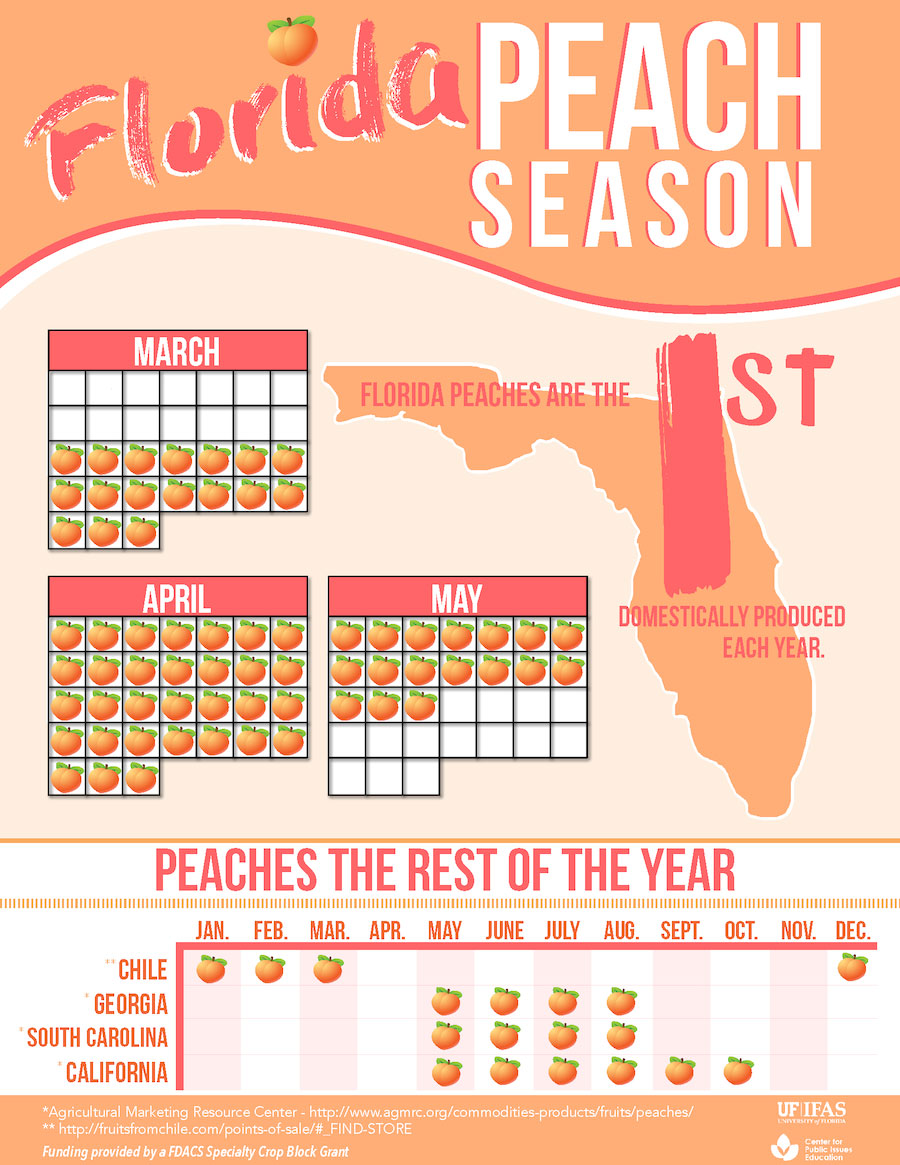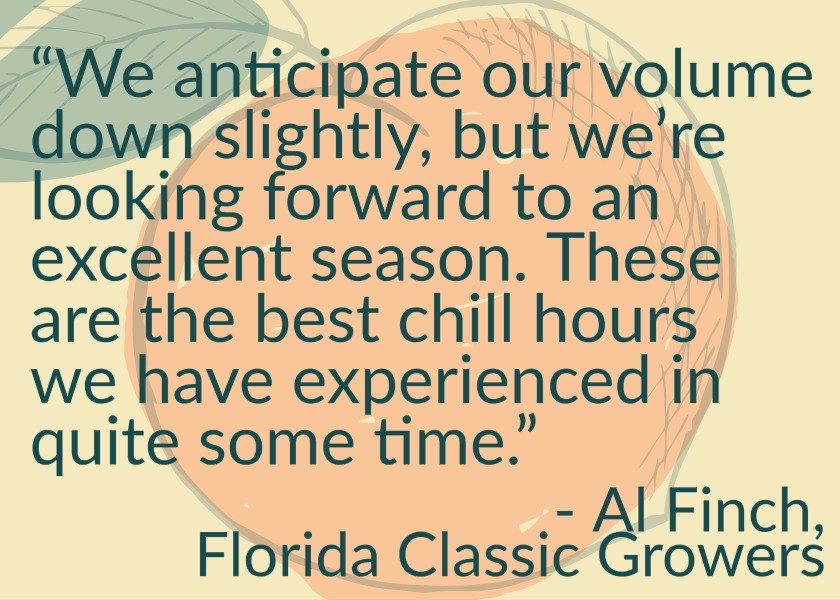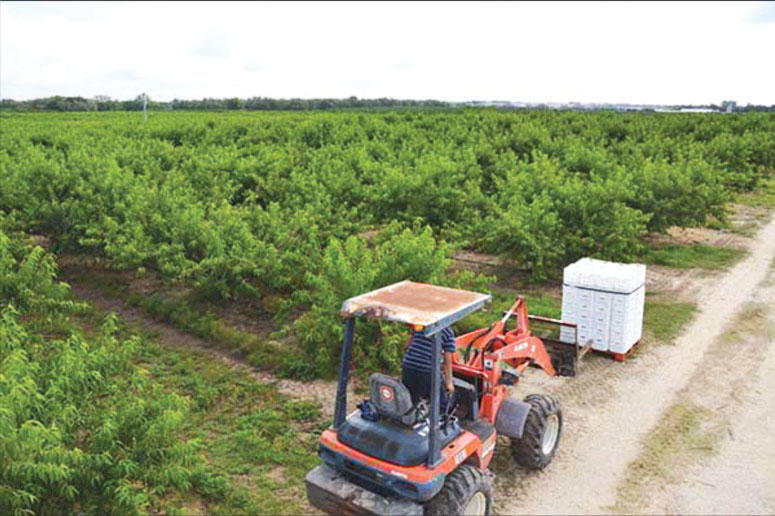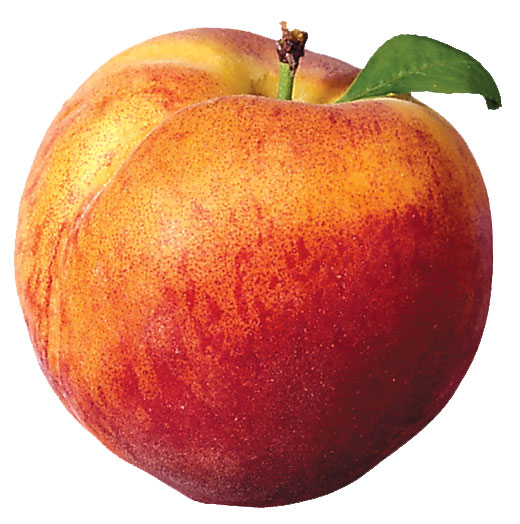Florida’s peaches are blushing

All humility aside, it’s good to be first.
Florida is the first state in the U.S. to have ripe, marketable peaches each year, a point of pride for the state’s growers and marketers.
The stone fruit is typically ready near the end of March and available into May. It’s not a long season, but it’s the first domestic peach crop of 2021.

With some good chill hours this winter, the state’s peach crop is looking rosy, said José Chaparro, fruit tree breeder at University of Florida’s Institute for Food and Agriculture Sciences. He runs the peach-breeding program.
“This year, we’re expecting the best crop that we’ve had in five years,” Chaparro said in early March, after a few orchard visits where he wrapped up some pollinations.
Florida Classic Growers, Dundee, Fla., should begin harvesting its peaches by the end of March, the volume peaking the first two weeks of April, said Al Finch, president.

“The season looks like it will be a little more condensed than in years past,” Finch said, expecting supplies to dwindle after the first week of May.
“We anticipate our volume down slightly, but we’re looking forward to an excellent season. These are the best chill hours we have experienced in quite some time.”
Since 2004, the commercial peach acreage has hovered in the 2,000 range, neither shrinking nor expanding much.
“It’s stable. The reason is not economics; it’s climate,” Chaparro said.

The state has had a severe lack of chill hours the past four years, hurting crop yield, fruit size and fruit shape, and it’s made the marketing window unpredictable.
“It’s been a nightmare scenario the last several years,” Chaparro said. “What we see here is what we’ll see in Georgia and the Carolinas in the future. What is typical? That it’s unpredictable.”
Even this relatively better winter in Gainesville, Fla., was about 80 chill hours below historical averages, he said.
Between Oct. 1 and Feb. 15, Alachua County, where Gainesville is, had 403 chill hours. Last season, there were 324 chill hours. The historic average is 481 chill hours, according to AgroClimate, a tool for managing climate risk in agriculture.
 Climate change can oscillate between cooler decades and warmer ones, while still showing an overall warming trend.
Climate change can oscillate between cooler decades and warmer ones, while still showing an overall warming trend.
True, tackling global climate change can seem like a tall order, but this state’s peach growers and breeders are problem-solving for the crop right now by breeding new varieties with lower chill requirements.
“Basically, we’re in a transition. To remain commercially viable, we have to make sure we have the varieties that work with the climate in that specific location,” Chaparro said.
In the future, varieties grown in north-central Florida will be grown in southern Georgia. And varieties grown in southern Georgia will be grown in central Georgia, he said.
UFSun, UFBest and UFOne are the most popular non-melting varieties with yellow flesh for commercial growers in Florida. UFSun has about 80% blush, so it’s mostly red. About 60% of the other two varieties blush red over their yellow skin.
Tropicbeauty is another popular variety, but it’s a melting variety, what used to be called free-stone. “When it’s overripe, it’s soup,” Chaparro said.
The University of Florida breeding program also has licenses for breeding in Spain, Mexico, Morocco and Australia.
Florida’s peach program begins when Chile’s ends. Then it wraps up before Georgia, South Carolina and California’s programs start.
“Florida peaches fill the void in the marketplace,” Finch said.
Florida Classic Growers continues to offer three packaging options to retail and foodservice customers: an 8-pound single-layer tray, a 20-pound volume fill box and a 2-pound pouch.
Related:
Florida Fruit and Vegetable Association names new director of labor relations
Florida citrus growers anticipate a good year
Florida ag commissioner comments on strawberry, bell pepper imports
Peach news and updates







